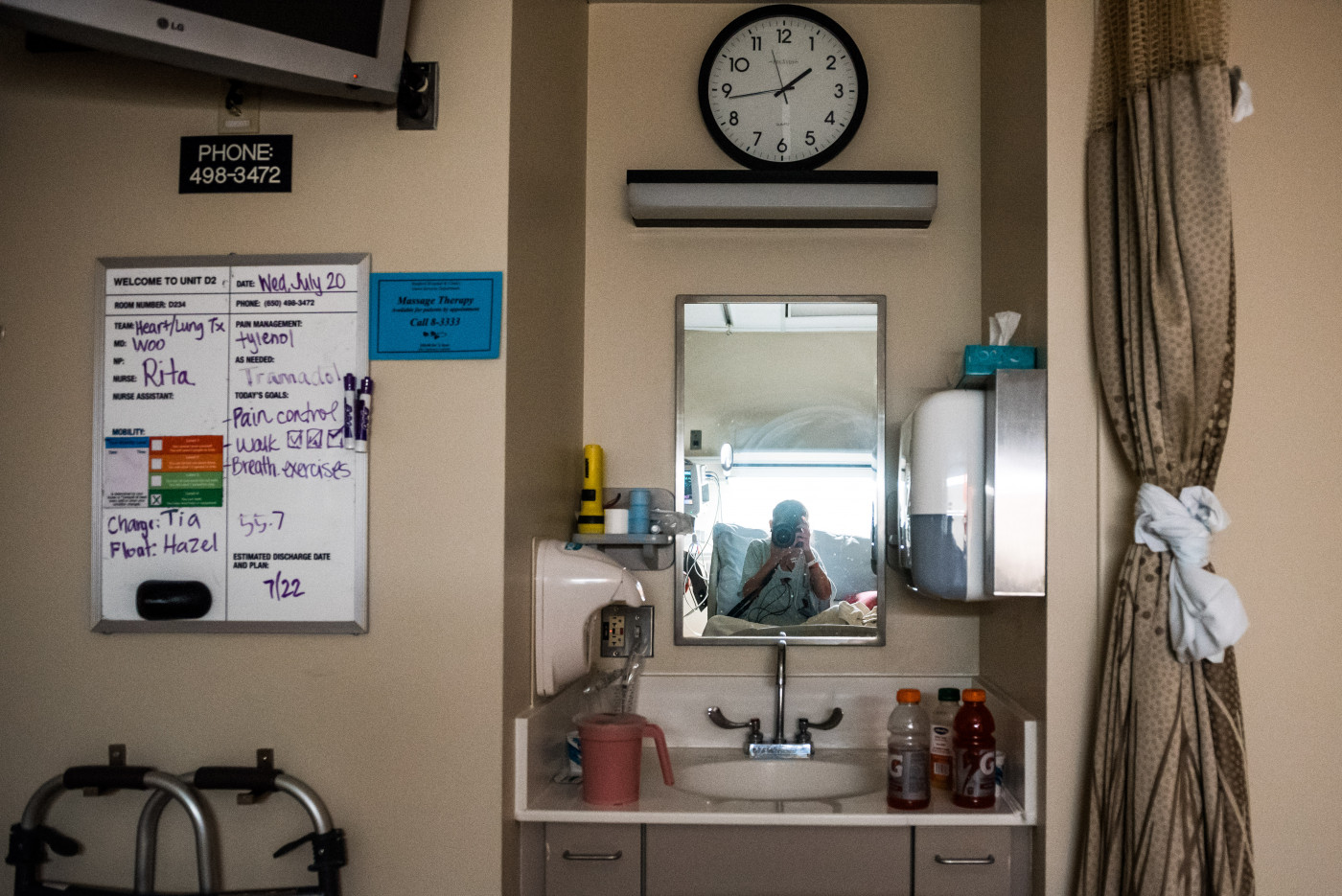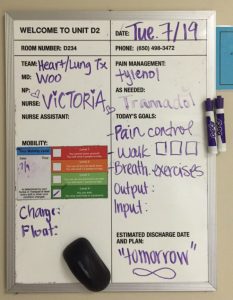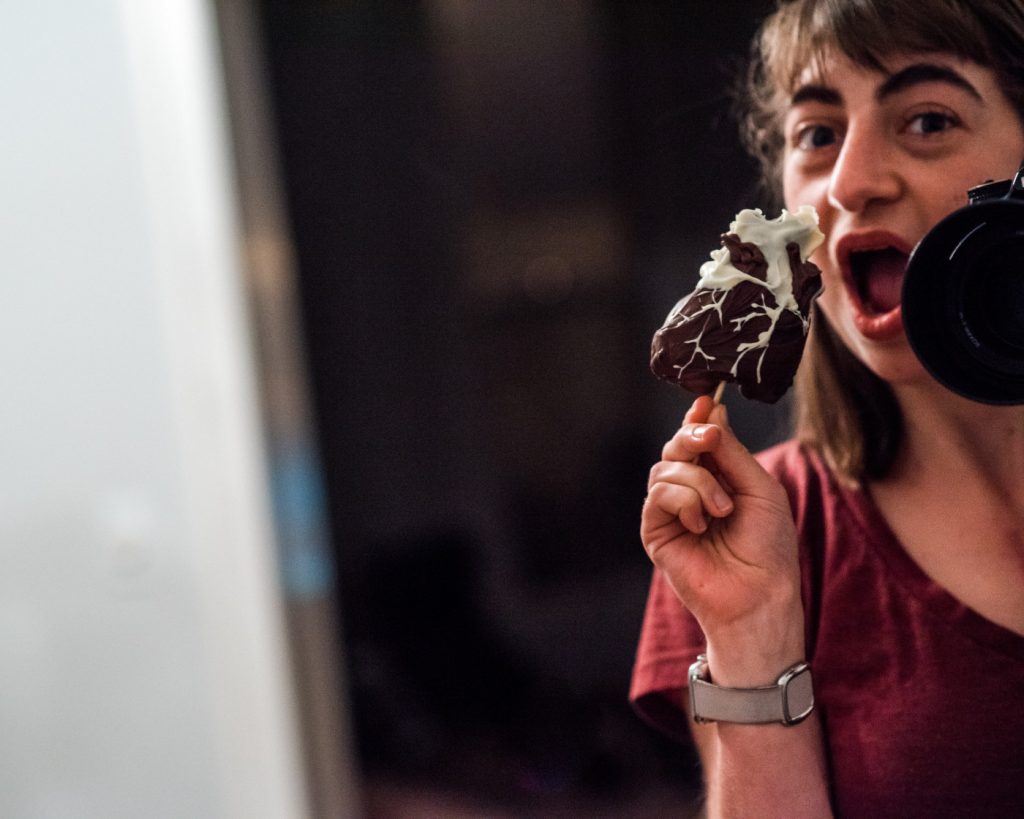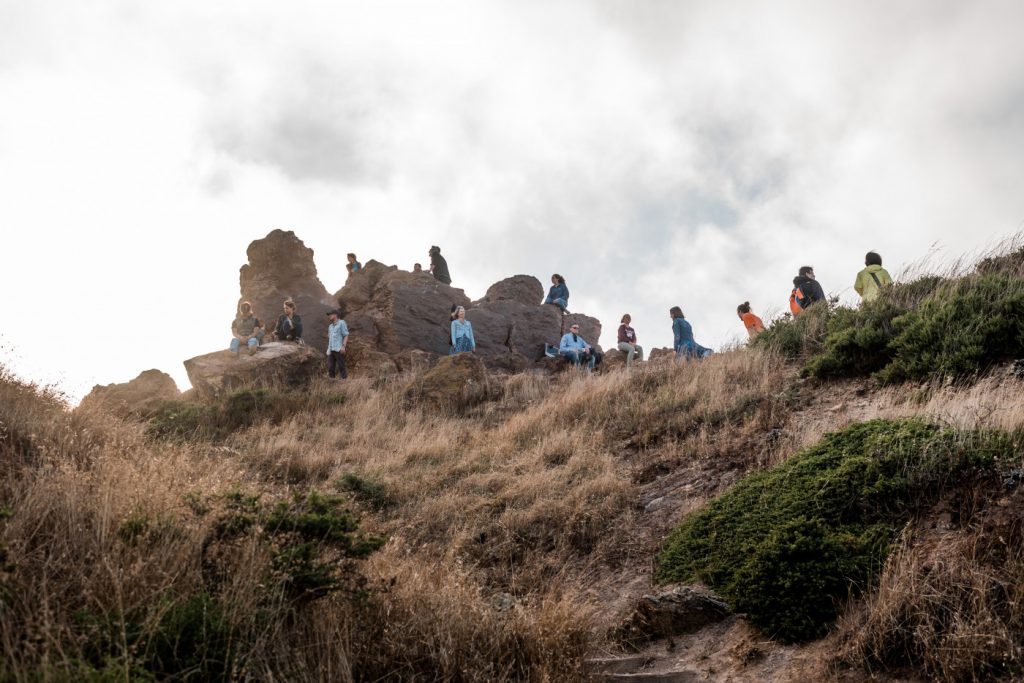Marking Time After Transplant

(Photo by Kathleen Sheffer Photography — kathleensheffer.com)
Days
We counted time in days after my surgery. The first few were a blur. “How many days was I asleep?” I wondered. I was lucky. Thursday night, I went into the operating room. Friday night, I got off the ventilator.

(Courtesy of Kathleen Sheffer)
Every day after my team moved me from the intensive care unit to the step-down unit, a nurse updated the whiteboard across from my bed with a new release date. On day 19, I took an eraser to 7/20 and replaced it with “tomorrow,” and an infinity sign — the quotation marks drawn as heavily as my sarcasm. My hospitalization seemed endless after initially being told I would be out in a week. On day 22, a surgeon removed the last of six chest tubes, and on day 23 I got to leave. That was when the real work began.
Weeks
Staying in an apartment close to the hospital, my parents and I were now in charge of all my meals with the constraints of the severely limiting and often conflicting diets for immunosuppression and gastroparesis — a complication of my operation. We were responsible for monitoring and recording my temperature, blood pressure, weight, heart rate, nutrition intake and output, oxygen saturation, and blood sugar. We had 18 new medications to administer at nine different times of day with various guidelines for how much food (or lack thereof) should be in my stomach. Though we had previously managed 15 different medications, including intravenous Remodulin (treprostinil), for 16 years, it took us weeks to feel comfortable with a new routine.
Each day was an accomplishment that brought me closer to full recovery and further from the operating table. I noted trivial milestones on my calendar: 100 days, 18 weeks, 230 days (not even joking, it’s on there). Every distinguishable block of time was worth marking.
Months
Three months, six months, and one year came with real consequences and real relief. Scheduled infusions, bone scans, and biopsies. The cessation of various prescribed precautions. Each time there was a 5-milligram decrease in my daily dose of prednisone, there were a couple of weeks of maddening and muddling withdrawal symptoms. This was followed by eventual relief and a lessening of the innumerable side effects of the steroid: acne, bloating, confusion, depression, energy swings, food cravings, grandiose delusions, hair growth, insomnia, jitters, kleptomania (only sort of joking), leg cramps, moon face, night sweats, o– OK, I’ll stop the alphabet there. You get the point: I could not wait to take less prednisone!
Marking the passage of time was critical to maintaining optimism in the painful and tedious months of my recovery. I knew things were improving when I switched from counting days and weeks to counting months.
Years
Celebrating the anniversary of my transplant was a unique opportunity to acknowledge the people who supported me along the way, and reflect on the changes we all had witnessed. Friends gathered for food and drink, and a hike to the top of a hill near my house. I loved the feeling of a collective celebration, better than any birthday party I’ve had in my life. I baked a cake — something I had never done before, but that I figured I could manage after all the much harder things I had managed to do in the last year. The cake was delicious, and so was the giant anatomical heart-shaped cake pop I made while testing various heart-and-lung-related cake decorations.
Now, I’m counting six-month blocks, hopeful for a time when I will count in years. Having passed the first year, the milestones don’t come with fewer precautions and medications. I’m focused on beating survival statistics. The next major milestone is five years, according to my doctors, the United Network of Organ Sharing, the Organ Procurement Transplant Network, and other organizations that publish data on transplantation. Some reports put five-year survival rates at 40 percent. You’d better believe I’m in that 40 percent and that I’ll be baking a cake in July 2021.
***
Note: Pulmonary Hypertension News is strictly a news and information website about the disease. It does not provide medical advice, diagnosis, or treatment. This content is not intended to be a substitute for professional medical advice, diagnosis, or treatment. Always seek the advice of your physician or other qualified health provider with any questions you may have regarding a medical condition. Never disregard professional medical advice or delay in seeking it because of something you have read on this website. The opinions expressed in this column are not those of Pulmonary Hypertension News or its parent company, Bionews Services, and are intended to spark discussion about issues pertaining to pulmonary hypertension.











Kaye Norlin
Yesterday was my 3-month mark after bi-lateral lung transplant! I celebrated by going to my first yoga class of the year (chair yoga)!